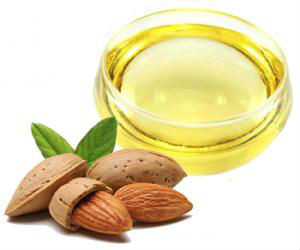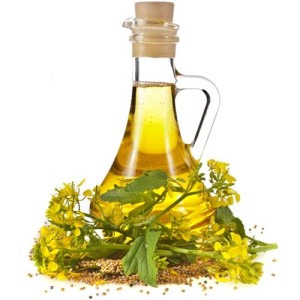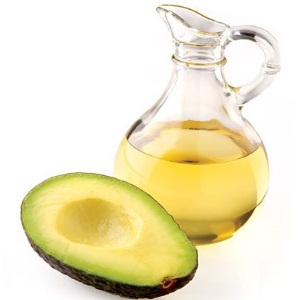Properties and Uses of Common Massage Oils
Massage oils have been used for centuries and are as applicable today as they were hundreds of years ago. Massage can be a simple to complex procedure that many people find therapeutic. Oils have been incorporated to help alleviate, relieve, and heal the body of certain ailments, tension, and stress.
Since massage oils enable you to achieve maximum benefits from the massage, there isn’t a ‘one product fits all’ approach. Instead, different oils offer unique therapeutic benefits that can enhance and improve the effects of a certain type of body massage. You’ve probably heard of many popular oils such as olive, coconut, and sweet almond oil, but there are many more that can offer much-appreciated value to get the most out of your massage.
Properties and Uses of Oils
Since there are literally hundreds of different types of massages ranging from sports and deep tissue to Swedish and stone massages, knowing what types of oils bring out the most therapeutic effects can be priceless information. You’ll want to consider properties of an oil such as:
- low density

- low viscosity
- absorbent
- slow drying
- odour
- moisture level
- quality and purity
- side effects
Although many massages can go without any oil at all, a basic reason for them is to help create a soothing and effective contact between the hands and skin. To really get the most value and benefits from a body massage, choose any oil that tickles your fancy.
Jojoba Oil
Properties: This oil is a shade of a dark yellow. It is antibacterial, highly absorbent, and its semblance to the body’s natural oil makes it ideal for people who don’t like a greasy, oily texture. It can be used alone or mixed and diluted with other oils to help them last longer too. It’s also has a longer shelf-life than other oils since it turns to a waxy-solid state in cool temperatures.
Uses: Although jojoba oil isn’t commonly known for its use in massage, it has proven to be a valuable asset for those who suffer with skin disorders such as acne and eczema. It breaks down blocked pores and even claims to help balance the brain, particularly the pituitary gland.
Coconut Oil
Properties: Thick and heavy in density when in its solid state, but can easily be warmed up between the hands to produce a light, slow-to-dry, and easily applicable substance. It’s very popular because of its almost odourless, colourless, and highly absorbent traits.
Uses: It’s an excellent oil for reducing friction for a body massage, but has been used to heal cracked and dry skin anywhere on the body. It’s also been known to help reduce back acne since it doesn’t block skin pores.
Grape Seed Oil
Properties: Very rich in nutrient value since it has high levels of linoleic acid (omega-6 fatty acids) which are very beneficial for the skin. It’s silky, smooth texture makes it a great massage oil. It’s non-allergenic properties makes it a friendly oil to skin types.
Uses: Grape seed oil is highly absorbent and deeply moisturising which makes it an excellent massage oil, especially for sensitive skin. It’s also an excellent carrier oil, which means it can be mixed and infused with other oils to help improve its oxidation and absorbent effects into the skin. This is the oil we use here at Body Kneads Massage.
Olive Oil
Properties: A slight green colour, but that hasn’t stopped it from being an extremely popular massage oil. It’s thick in density, but it can be diluted down. It’s highly absorbent and has high nutritional value since its made from a number of nutrients such as vitamins E, phosphorus, calcium, iron, zinc, magnesium, and carotene.
Uses: It’s well commonly known to be used on infants for conditions such as cradle cap, but it’s also very beneficial for adults too. Other than reducing friction between skin to skin contact during a massage, it also helps to improve skin strength and elasticity. It also provides a slight warming effect, has been used to help relieve stiffness, and is non-allergenic which makes it suitable for all skin types.
Sweet Almond Oil
Properties: This oil is profoundly recommended and in high demand for massage use. It’s very absorbent and is thin, but it’s still able to maintain its oily properties long after the massage is done. Made from sweet almonds, it does have a mild odour that doesn’t overwhelm the senses.
Uses: It’s mainly used in all sorts of body massages to create a smooth massage sensation. During massage, sweet almond oil also helps to moisturize and soften which is ideal for those with dry and dehydrated skin. It can also be used as a base in other oils, and can be applied directly after a shower (while pores are open) to get maximum results.
Macadamia Oil
Properties: This oil is very similar to the body’s natural oil (sebum) that helps to prevent drying and aging effects such as wrinkles. Since its makeup mimics sebum, it’s light in texture and highly absorbent. It can be used with other oils also to improve its absorbency into the skin.
Uses: Although it’s an excellent oil to be massaged into the face to help provide much needed moisture and skin softening, it’s not typically used as an all-over body massage oil. It’s touted to have anti-aging effects and can be softly massaged into the skin without fear of comedogenic effects.
Sesame Oil
Properties: This dark yellow oil has high nutritional value since it contains amino acids, vitamin E, and lecithin – all the stuff good for the skin and body. It’s antiseptic and anti-fungal properties makes it a purifying oil that’s used for many different ailments in the body. It’s can have a strong odour, so it’s best if it’s diluted down to 10 percent to also reduce its warming effects. It’s also said to be the most ideal oil that has the longest shelf life.
Uses: Sesame oil is often used as a daily massage oil to help improve the body’s overall health and well-being. It’s purifying effects help to cleanse the skin, apply moisture, and prevent dehydration symptoms. Those with red, irritated skin may want to avoid using sesame oil. It’s also been known to help with arthritis and rheumatism, ridding the body of fungal diseases like scabies and ringworm, and supporting the body’s tendons and ligaments.
Pecan Oil
Properties: This heavy and slight dark yellow oil can be overpowering and is often used in a blend oil when used for massages. It’s highly absorbent, has a high moisture level, and can replace olive oil in many therapeutic oil recipes. Also, its nutritional value makes it a great support to the cardiovascular system and skin since it contains more antioxidants than any other nut.
Uses: Pecan oil is best used for skin conditions such as dry, flaky skin, diaper rash, acne, and eczema. It’s advised to be used by adults since it has ‘plumping’ effects that can help smooth out the effects of aging.
Mustard Oil
 Properties: Although this oil has a sharp and pungent odour, it’s still a great massage oil source. It’s thin in density and is easy to apply. It moisturises and cleanses the skin which makes it a popular oil.
Properties: Although this oil has a sharp and pungent odour, it’s still a great massage oil source. It’s thin in density and is easy to apply. It moisturises and cleanses the skin which makes it a popular oil.
Uses: It’s cooling effects makes it a good selection for those seeking massage as way to increase circulation throughout the body. Mustard oil is also applied to the body via massage twice a week as a cleanser to rid the skin of trapped dirt and dead skin cells to reveal glowing, healthy skin. It can be used alone, especially if you are using it to calm body ache pains.
Wheat Germ Oil
Properties: This very thick and high viscosity oil is not recommended for massage use when used alone. Because of its consistency, it’s often blended with other oils such as rose hip seed, coconut, or grape seed oils to improve its elasticity to that of a massage oil. It’s considered to have the highest amount of vitamin E than any other oil source, and this fun fact lends to its amazing results when used.
Uses: It’s an excellent oil to treat skin disorders such as eczema and psoriasis. It’s also used as an anti-aging oil to reduce the effects of aging skin when it’s combined with rose hip seed oil. The result is a powerful antioxidant formula that you can get your fix of in a massage session.
Safflower Oil
Properties: This pale yellow oil can be used for massage since it’s suitable for use by all skin types. It’s going to protect the skin as much as it can because of its high nutritional value including the omega-6 fatty acid (linoleic acid) and vitamin E. Although a benefit is that it’s safe to be used 100 percent alone, you don’t want to keep it stored too long. It will turn rancid rather quickly after opening.
Uses: It can be used by all skin types, and is said to provide blood cleansing capabilities. The nutritional value of safflower oil also contributes to its skin protecting and rejuvenating qualities.
Peanut Oil
Properties: Although it’s mostly known for its culinary uses, it can be used as a massage oil. It’s pale yellow in colour and thick in texture. It also has a strong peanut odour, but to dilute the viscosity and odour, you can blend with other oils to make it more suitable for massage and enhance absorption qualities. Ensuring that you choose an organic peanut oil can also enhance its anti-inflammatory effects.
Uses: You’ll want to make sure that you don’t have any peanut allergies, as this can trigger severe side effects. It is beneficial for all skin types, especially dry and chapped skin. It’s also used in massage for bursitis and arthritis.
Avocado Oil
Properties: This thick oil comes in either a yellow or green colour, depending on its avocado source. It can be used alone, but because it’s so thick, it’s often diluted down with a base oil to make it more massage appropriate.
Uses: Because avocado oil is thick in consistency, it’s mostly used for facial massages or its put into a hot-oil blend for all-over body massages. It offers high chlorophyll and carotenoid pigments that can help to improve oxidation circulation and provide many antioxidant benefits.
Apricot Kernel Oil
Properties: This pale yellow oil is akin to sweet almond oil, but can be more expensive. It’s thin and highly absorbent qualities makes it an ideal massage oil. It’s said that it also has balancing and stress-relieving properties.
Uses: It’s safe to be used by all skin types, but it can do wonders for those with sensitive, dry, inflamed, and aging skin because it penetrates and nourishes as it’s being applied.
Although many massages can be done without any oil at all, it certainly doesn’t invoke the luxury, stress-free air a massage parlor can create with using the right aromatherapy techniques. Massage oils can make a simple massage more luxurious or a complex session more therapeutic and health-promoting.




